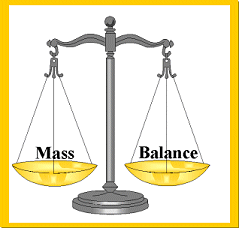| Data Analysis: Mass Balance | |
| |
|
Mass balance (or materials balance) is simply a method of data analysis. When used at the process level it can quantify the amount of waste lost during the process and hence identify those areas that might benefit from waste minimisation initiatives. The method involves quantifying the inputs and the outputs of the process. For any process the volume or mass of materials entering the process must equal those leaving the process i.e. the fundamental laws of physics are working as they always have done, and we accept that matter can neither be created nor destroyed but may change from one form to another. |
 |
|
The volumes/ masses associated with the outputs are then subtracted from the volumes/masses of the inputs and any discrepancy indicates losses. E.g. if a manufacturer of baked beans buys in 4 tonnes of aluminium to make the tins for the baked beans and if the company can only account for 3.8 tonnes of finished cans. Then losses during the process equate to 0.2 tonnes of aluminium. The process is then looked at in more detail. The company may find that initial cutting of the aluminium sheeting produces 0.05 tonnes of aluminium waste. The "missing" aluminium is reduced to 0.15 tonnes. The company may then chose to look at the amount of tins that fail quality control, i.e. constructed but leak this might indicate that 0.1 tonnes are associated with the construction process. Finally the company may investigate those cans lost to transport and storage accidents this might account for the remaining 0.05 tonnes, if not then there are wastes the company is missing or the measurements are somehow inaccurate. In either case more investigation is warranted and waste reduction techniques can be developed to solve the problems. One of the most important elements of mass balance is to ensure that units used are appropriate, i.e. subtracting kilograms from imperial tonnes cannot be done, similarly calculating beans in litres and attempting to subtract kilograms will produce unusable results. The method can be used at any level of review i.e. from the whole site, to a single production process or area and the same method can be used to investigate both energy and water use and loss. |
|